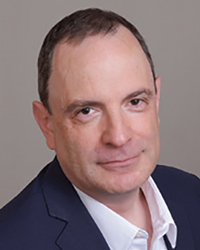 Mere days before our cover story on attosecond photonics went to press, the Nobel Prize in Physics was awarded to three researchers for their pioneering accomplishments in attosecond science. My immediate response was glee that our November cover story made us appear almost prescient, until I realized that the article mentioned neither Pierre Agostini, Ferenc Krausz, nor Anne L’Huillier — the three latest Nobel Laureates. *Cough.
Mere days before our cover story on attosecond photonics went to press, the Nobel Prize in Physics was awarded to three researchers for their pioneering accomplishments in attosecond science. My immediate response was glee that our November cover story made us appear almost prescient, until I realized that the article mentioned neither Pierre Agostini, Ferenc Krausz, nor Anne L’Huillier — the three latest Nobel Laureates. *Cough.
Sometimes things can change in a Nobel attosecond.
It was tempting to quietly choose a different cover story. But why deny the zeitgeist?
Additionally, contributing editor Marie Freebody’s cover story on attosecond photonics is a perfectly serviceable and interesting accompaniment to the larger story unfolding in the news. Her story, which can be found here, provides an excellent primer on the early work in attosecond photonics,
including more recent advancements made by 2018 Nobel laureates Donna Strickland and Gerard Moreau. But Marie also turned her sights forward to explore the potential and supremely interesting applications for attosecond-pulsed lasers.
As some of you may have read in the recent mainstream media stories regarding the Nobel Prize winners, one attosecond is to a second as a second is to the time passed since the birth of the universe, which occurred roughly 13.8 billion years ago. That estimate is not even half right. An attosecond is technically
one quintillionth of a second, or what one second is to about
31.7 billion years. It probably took you about five quintillion
attoseconds to read this sentence, give or take a few quadrillion.
Substantive advancements in laser capabilities have the
curious knack of creating entirely new applications suited to those capabilities. Lasers that are able to emit pulses in the
attosecond domain would be operating on the same timescale in which electrons move within atoms. As Marie points out in the cover story, such lasers might pave the way for petahertz-scale electronics, ultrafast metrology for microscopy or nanoscopy, and possibly the ability to control quantum processes.
It is clear from her story that commercial attosecond sources are more than a few years into the future. But the underlying scientific understanding and capabilities are rapidly advancing, and the recent Nobel Prize will only contribute further to the momentum.
More importantly, as our cover stories this year on laser fusion, secondary sources, and now attosecond photonics prove, photonic technologies have not nearly approached the limits of their potential.
